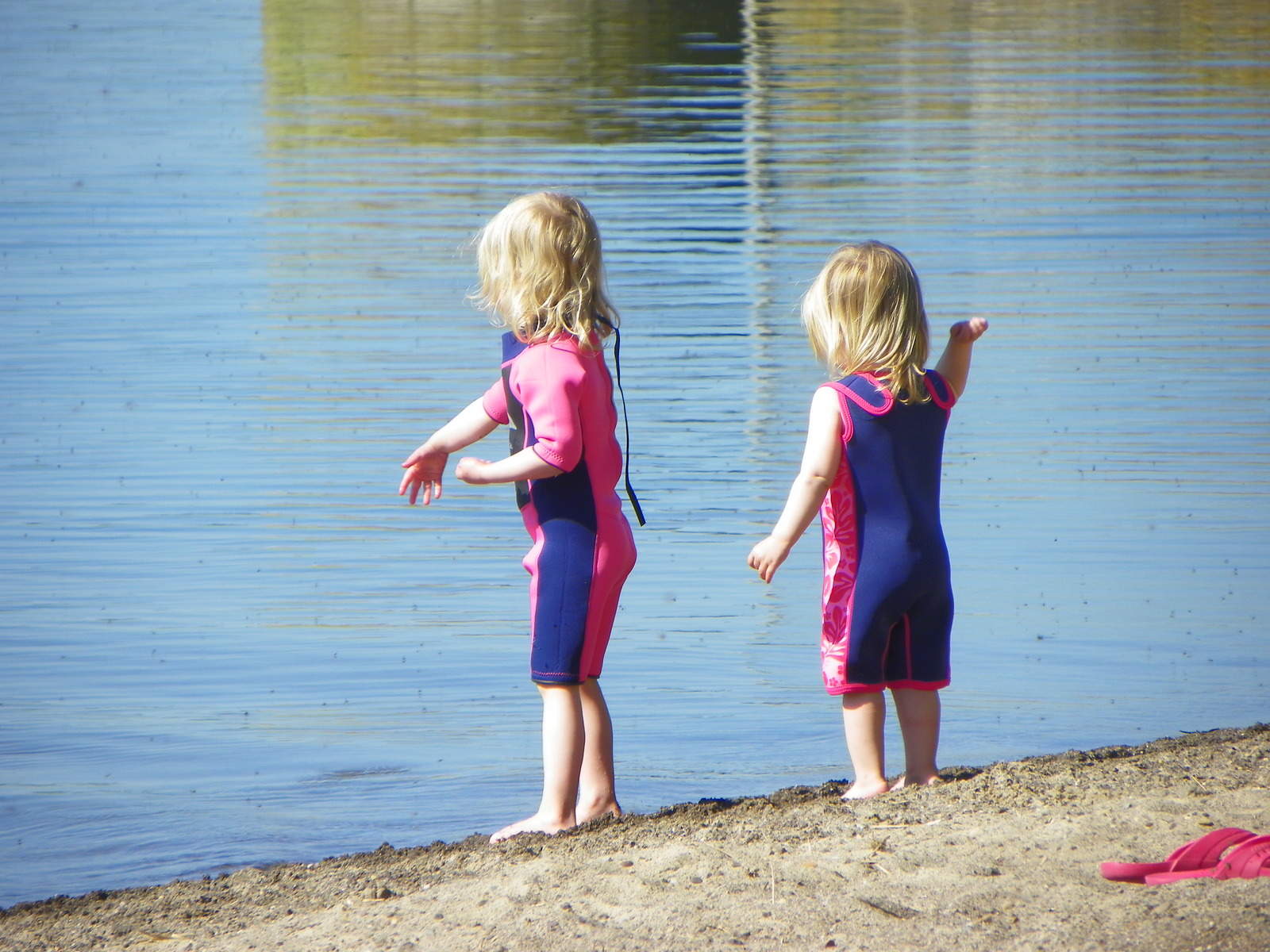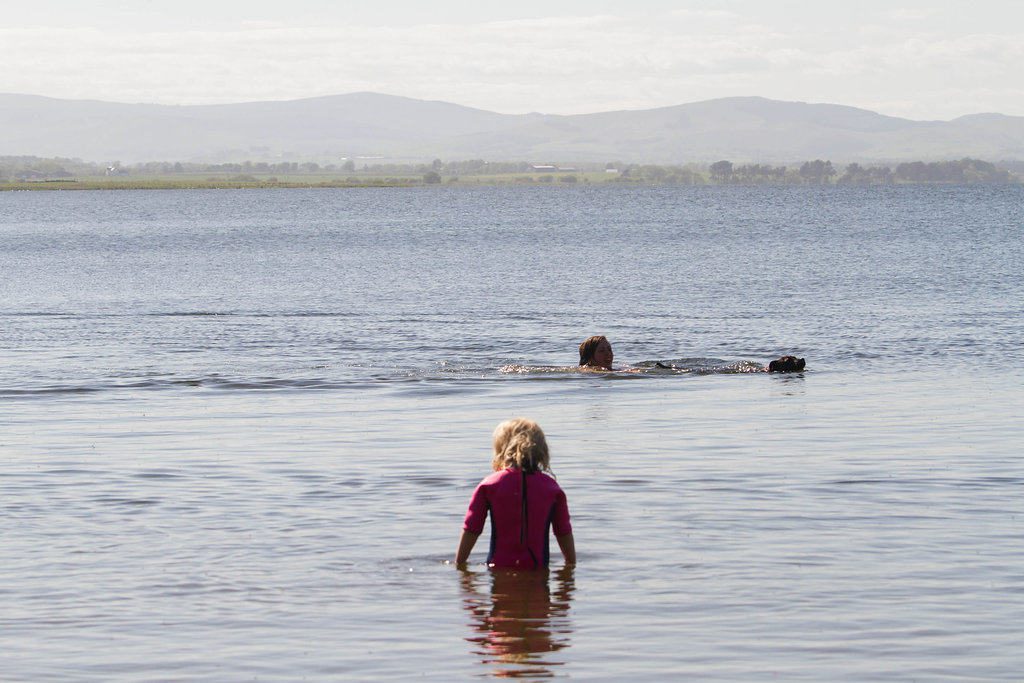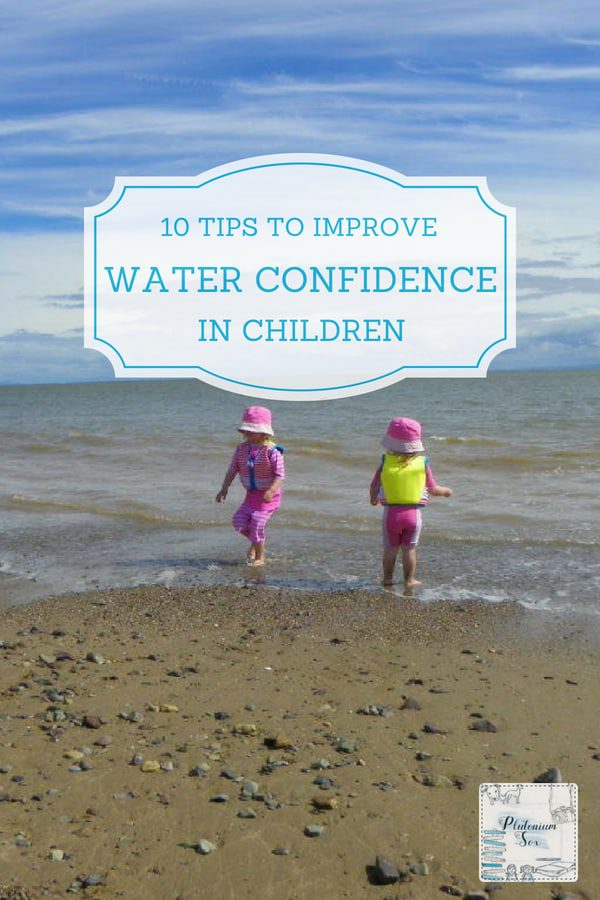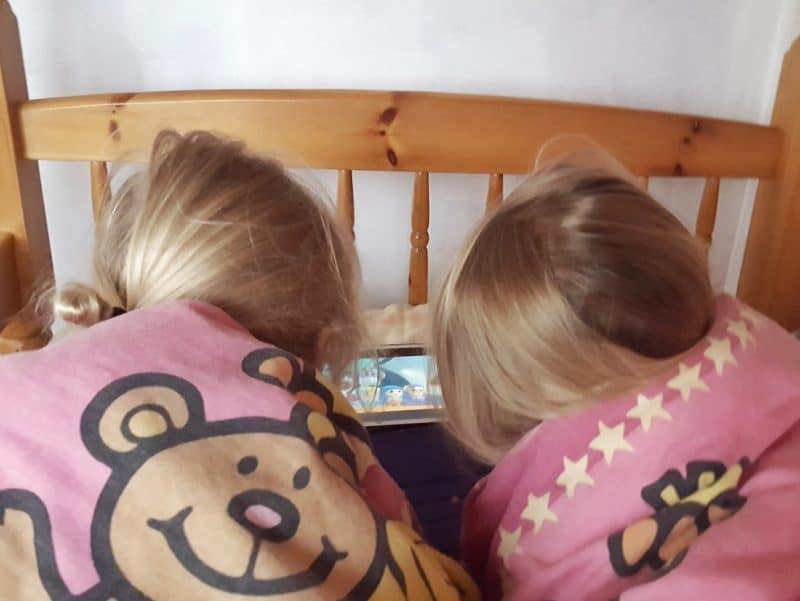10 ways to build children’s water confidence
Water confidence activities and water confidence games with the children have become an integral part of our week. Swimming has been a part of my life for as long as I can remember. As a child, I swam competitively for our local club. The training regime was brutal, we’d often be in the water by 6.30 am to fit in an hour and a half before school, as well as swimming again in the evenings and at weekends.
But these days, swimming is more about the children than me. I get in once or twice a month on my own, but I insist that the children are in the water with us regularly. I’m not a swimming coach or teacher and I have no formal qualifications. But what I do have is two little girls that are happy in the water, one of whom was swimming unaided by the age of three. All these tips are to be used under one to one supervision only.

1. Start young
You used to have to wait for vaccinations before a baby could start swimming, but these days pools are so clean that they can start at any age. If you’d like to start them young, chat to your GP to make sure they have no concerns. My girls both started at eight weeks old and have never been afraid of being in the water.
2. Swim together
I think this is the most important thing of all when it comes to building children’s water confidence. If they see that you are happy and confident in the water, they will be too. Swimming together as a family when children are young will prevent any phobias of water as they get older. Water confidence activities will work best before they get scared of being in water.

3. Swim regularly
We try to get to the pool every weekend. That way, there is never a big gap where they lose water confidence. And if they have a bit of a fright – a big splash from a passer by or a tumble off a pool float – they don’t end up dwelling on it because they’re soon straight back in the water and the fright is forgotten.
4. Make it fun!
There is really no value in trying to force children to learn to swim at a young age. I know swimming lessons for babies are really popular nowadays and I’ve seen all the photos of them swimming underwater. But I’ve also heard horror stories about children developing phobias from being forced under. I would personally prefer to get children in the pool on their own terms and let them play. Water confidence games are just as valuable to little ones as swimming.
5. Use floating toys for water confidence games
Toys that float on top of the water are brilliant for getting children to reach towards things. When they’re wearing a buoyancy aid, this is perfect for encouraging them to let go of their carer or the side. As they get a bit more confident, reaching out for the toys is the first step towards using swimming strokes.
We love these Funky Floaties by SwimFin. They come in bags of four in a handy net bag, and are perfect for Libby to throw, chase and hold, making swimming great fun. She also plays with them in the bath, so bringing them to the swimming pool gives her something familiar to play with that she knows is safe and fun. They are lovely and soft, made from neoprene just like a wetsuit. These brightly coloured toys are all real little characters. They are weighted so that they bob about upright in the pool, just like a little person treading water.

6. Find the right buoyancy aid for water confidence activities
I don’t personally like arm bands. I think they keep children a bit too buoyant and restrict them from using their arms. Early swimming is all about getting used to the water – but it is also a great time to start feeling what it’s like to use your arms and legs to move you along. Some people like to use a swimming costume with built in floats, or a float pack that goes on the back.
We tried a few different buoyancy aids with Libby and settled on the SwimFin. She has been using it since she was about 18 months old, although I’m not sure they are recommended for children that young. The fin is totally non-restrictive, and the better your swimming gets, the further the fin comes out of the water – until you’re not relying on it at all.
7. Take buoyancy aids off when children are ready
For quite a while, I could see that Libby was no longer relying on her SwimFin when she was swimming along in the water. What she was doing was using it to keep her upright when she was treading water. So I mentioned to Libby that she could have a go at swimming without the fin if she wanted to. At the time, she wasn’t ready so it wasn’t mentioned again.
That is until Libby decided that she didn’t need it any more – and she was right. The fin came off, and she swam a few strokes on her own. Each week she’d swim a little bit further. For us, there was a setback then when my husband had an accident and was unable to swim with us for a while. When I was taking both girls on my own, Libby had to go back to wearing the fin. Mercifully my husband is now back in the water, so Libby is able to swim unaided again. She can now manage to dive in and swim half a width under close supervision and without a buoyancy aid.
8. Use toys that sink
For very young children, it can be difficult to get the hang of bringing their face out of the water to breathe. As a result, much of their swimming will be done under the water. So until a child is confident enough to put their face in the water, they are unlikely to be able to swim. Diving down to get a toy is a fun water confidence activity to get them used to being underwater.
We love these Dinky Divers from SwimFin. Because they stand up, it’s not too far for a child to dive down to get them in the shallow end of a standard pool. They are bright and colourful which makes them both easy to see and fun to play with. They are also really easy to get hold of so the child can go straight to them, grab them and get straight back up again. This keeps it fun and not too much like hard work.

The other thing I really like about these is that they sink very slowly as they fill with water. To get used to putting their face in and fetching something, children can grab them before they sink. As they get more confident, they can wait a little longer before they fetch them, eventually picking them up off the bottom of the pool. These come in packs of four in a handy net bag that is fine to take on poolside.
9. Don’t be pushy
As an ex-swimmer, I know all about “those” swimming parents. Their child has to be the first to learn to swim, win every race and never miss training. When I think back to my swimming days, I can’t think of one child with pushy parents that kept swimming as they got older. Those children were swimming for their parents, not for their own love of the sport.
10. Enjoy the time together
Swimming is one of the few activities that the whole family can partake in together. Whether it’s swimming weekly with young children, getting into the pool on holiday, playing for the same water polo team or taking a dip together in the sea. Nobody is distracted by technology, work or life in general. It is the perfect way to enjoy each other’s company. Children will learn to swim in their own time. But a shared passion for the sport will benefit the whole family for many years to come.






